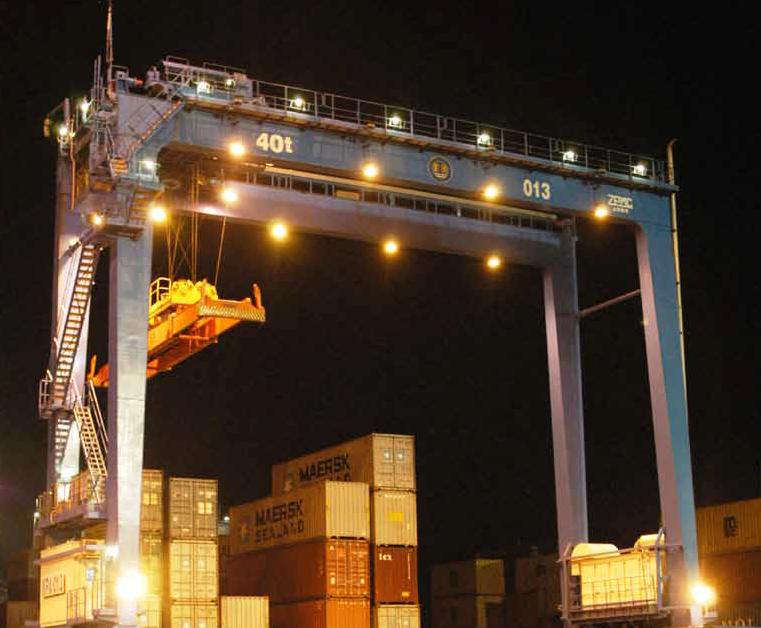
Development in Kenya is experiencing something of a bottleneck; but as Jeff Daniels learns, action to free up matters is now well in hand.
Every business has headaches; but by far the best kind are those related to satisfying ever-increasing demand. That’s the situation facing Kenya Port Authority (KPA) at its Mombasa facility, thanks to a healthy economic growth rate within Kenya itself, coupled with the fact that Mombasa is the port of choice for surrounding countries such as Uganda, the Democratic Republic of Congo, Southern Sudan, Burundi and Rwanda. Even the northern part of Tanzania finds Mombasa more convenient than that country’s own port at Dar-es-Salaam.
The growth of the containerised cargo shipped to Mombasa port has been increasing at the rate of 10 per cent each year for the last eight years. Absolute capacity for the port is 20 million tons per year and last year it reached just one million short of this figure, making an extension of the terminal long overdue.
KPA was established in 1976—and how things have changed since then. Mombasa has been an active trading centre for centuries, since the days of the spice routes, but when KPA took over, using the TEU unit (20-foot equivalent units) as reference, capacity of the port was no more than 250,000 TEU. By 2002 this had already been exceeded and by 2009 the port was handling 600,000 TEU per annum. And all of this in a berthing situation that hasn’t changed since 1980.
To relieve some of the pressure, two years ago KPA introduced a stop-gap solution of contracting offsite private cargo freight stations complete with the necessary customs clearing and freight forwarding facilities.
Now, though, a more permanent solution is underway, with a major expansion programme to the west of the present facilities. An entirely new terminal is being built on 100 hectares of reclaimed land that will ultimately provide an additional 1.2 million TEU or a total of three times the port’s existing capacity. The entire investment is in the order of Sh10 billion being provided by the government, backed by a soft loan from the Japanese government to encourage use of Japanese contractors.
In October last year, the Dutch company Van Oord Dredging and Marine Contractors was appointed to deepen the western channel—but work was held back until contracts for the terminal itself were finalised. As the channel is dredged to a depth of 15 metres, material dug from the sea bed will be used to reclaim part of the land on which the terminal is to be sited. With one dredger already at work and a second on its way, the project will keep the company busy for 18 months.
Not only is the Sh5 billion dredging project necessary to accommodate the largest vessels shipping companies want to use in order to maximise economies of scale, it will also mean that ships no longer have to wait for high tide before berthing. It will make the new terminal a truly 24-hour operation.
The first stage of the six-year building programme, being undertaken by Japan Port Consultants, will be Container Berth 19. Work for the new berth is being done by China Roads and Bridge Corporation and should be complete by 2013, to coincide with the delivery of a Triple-E vessel container transporter with a capacity of 18,000 TEU, ordered by Maersk Line, the largest single shipping line using Mombasa.
In fact Maersk has long been urging KPA to adopt more ambitious plans and go beyond just solving congestion and rather focus on growth. The managing director of Maersk makes the point that container vessels are continually getting larger and ports will only retain their relevance to the market by investing and expanding to accommodate them.
The existing berths at Mombasa were designed to accommodate ships 180 metres long but these days most of the ships calling at the port measure 230 metres. The three container berths have a total length of 600 metres which is being extended to 760 metres, thereby accommodating three vessels each of length 235 metres with a 15 metre safety allowance.
The other concern shipping lines have is the time it takes to offload vessels. Some have threatened to impose charges on imports due to the delays where it takes some ships more than 10 days to offload. The Kenya Ship Agents Association has petitioned KPA, asking the authority to address delays where container ships are forced to use general cargo berths to offload. KPA has a target of 25 containers per hour but in the general cargo berths, the rate drops dramatically to just 6.5 containers per hour. In a move to improve cargo handling rates, KPA is looking forward to the commissioning of two mobile harbour cranes and three ship-to-ship gantry cranes in August.
There is no doubt that something needs to be done in Mombasa but few consider that expansion of port facilities alone is the answer. The geography of Mombasa is complex. Despite being on the other side of the island, the port is still reliant on the single road in and out of Mombasa. Not surprisingly, road congestion is bad and not alleviated by equally poor rail links.
Although Mombasa is KPA’s flagship and a key component of the government’s 2030 development vision, KPA does have other smaller ports along the coast. The deepwater port of Lamu, in particular, is seen by many as a potential relief valve for Mombasa. Either way, though, there seems little doubt that KPA will be kept busy for the foreseeable future meeting ever-increasing demand. http://www.kpa.co.ke












